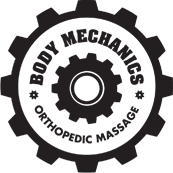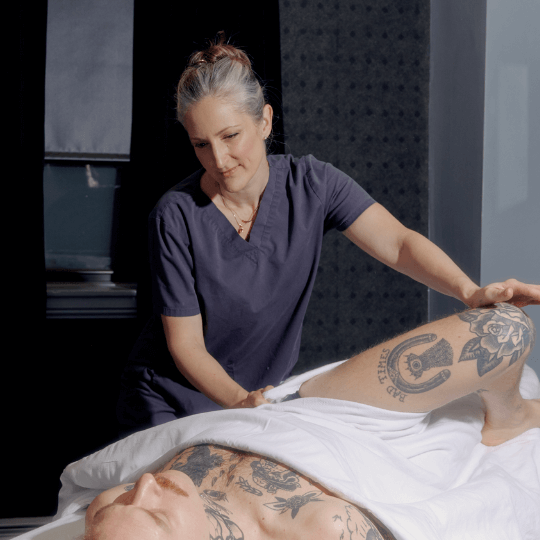Exercises for Plantar Fasciitis
Plantar Fasciitis is one of the most common foot complaints. Technically what is happening is the plantar fascia is being over stretched or over taxed
Beret Kirkeby, “Treating Plantar Fasciitis”
Exercise for plantar fasciitis should reduce excessive strain on the plantar fascia and correct biomechanical faults that contribute to plantar fasciitis. Common biomechanical faults include over-pronation, flat feet, a tight Achilles tendon (especially from tight soleus muscles), excessive weight, and a high-arched foot. These imbalances are corrected with the right mix of stretching and strengthening exercises that bring the foot and ankle into correct functional alignment and movement. First, a general exercise routine for all people suffering from plantar fasciitis will be explained; followed by corrective exercise routines for specific common biomechanical imbalances.
General Routine
Before discussing targeted corrective exercises, most everyone with plantar fasciitis will benefit from relieving the strain from a tight Achilles tendon. But because the body works as a whole, it’s important to not only stretch/work the muscle that directly attach to the Achilles tendon, but also the rest of the posterior chain muscles. Treatment would start at the gluteal muscles, hamstrings, and then the calf. The figure below is the posterior chain of muscles that connect to the Achilles tendon. If you are seeking treatment for plantar fasciitis, it is important to note that it it begins in the hips. It is a common misunderstanding that it is the feet causing the issue. While the feet clearly play a role, the focus of treatment is not specifically the feet unless you are utilizing orthotics or working on foot mobility.
Imbalance or dysfunction in any segment of the posterior chain can produce excessive tightening of the Achilles tendon, so it is important to stretch each segment individually first and than end with a full posterior chain stretch like the Downward Dog yoga pose.
The following exercises are recommended in this order:
First, Stretch the Soleus (lower calve)
Second, Stretch the Gastrocniemius (upper calve)

Third, Stretch the Hamstrings

Fourth, Stretch the Erector Spinae

End with the Downward Dog Pose (will also treat the gluteus muscles)

It’s best to use the Active-Isolated Stretching technique on each segment and end with holding the Downward Dog pose for 30-60 seconds. If you are unfamiliar with Active-Isolated Stretching, visit: http://www.stretchingusa.com/active-isolated-stretching
Exercises for Specific Biomechanical Faults
To understand biomechanical faults, let’s first look at the walking cycle. In a perfect walking stride, the person’s arch elevator muscles of the leg (tibias anterior, peroneus longus and tibialis posterior) work in perfect harmony with the plantar-flexors (gastric, soleus, etc.) to absorb, distribute and release stored kinetic energy. On heel strike, the arch elevators must fire eccentrically to decelerate and dissipate ground reaction forces via foot pronation and internal tibial rotation.
As the foot transitions from midstance into push-off, the toes begin to dorsiflex causing activation of the plantar fascia and associated muscles.
But if the muscles of the leg and ankle are imbalanced, the forces acting on the foot and ankle are not evenly distributed. This often results in excessive strain to the plantar fascia. Over pronation, a common problem causes excessive strain on the plantar fascia and often leads to flat feet.
If you are over pronating your plantar flexor muscles are often stronger and tighter than your arch elevator muscles. The arch elevator muscles of the leg (tibias anterior, peroneus longus and tibialis posterior) need to be strengthened. The following two exercises help to strengthen these weaker muscles.
An elastic band, rubber tubing, or cable machine are all good choices to provide resistance. Start the ankle inversion exercise in neutral and fully invert your foot slowly. Do 3 sets of 20 to 30 reps. The second exercise is for flat feet:
Sit on a chair so that your knees are at an approximate 90-degree angle with your feet on the ground. You’ll need a smooth floor so that the towel will glide easily. Spread the length of the towel in front of you and sit with your back straight and bare foot flat on the edge of the towel. The short end of the towel should be against the legs of the chair. Without moving your heel, contract your toes to bunch up the towel and draw it toward you (as shown) until you have done 2 sets of 10-20 repetitions of toe contractions or run out of towel. As the exercise becomes easier over time, begin adding a light weight to the end of the towel.
Excessive Supination and High Arch
Like the inversion exercise, a Thera-Band, tubing or cable machine will work well. Do 3 sets of 20 to 30 reps and move slowly throughout the range of motion. The second exercise for high arches involves a tennis or golf ball to release the muscles on the plantar surface of the foot.
Place the ball under your foot and move the ball back and forth 20-40 times. Repeat on other foot (Note: roll only on the non-painful part of the arch, if the entire surface of foot is painful, avoid this exercise).
If you have any questions or comments on this topic, make sure to post them on our blog or email us directly.
Fitness information provided by Ivan Garay, a personal trainer. To book an appoinment for personal training, please contact his website: http://ivangaray.massagetherapy.com/








